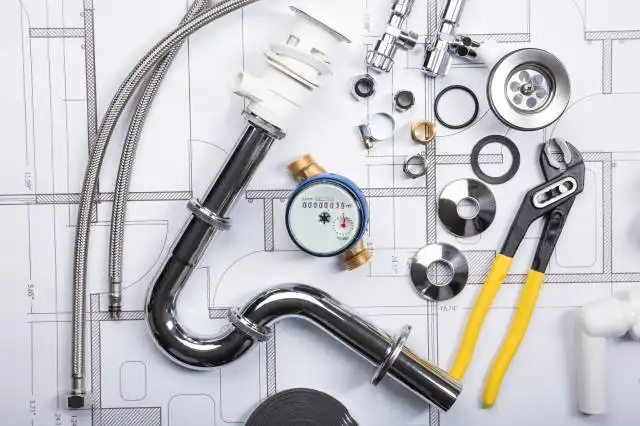Start a Home Theater Installation Business
Hollywood Magic in the Living Room: Building a Home Theater Experience
| Updated


HOME THEATER INSTALLATION BUSINESS
Get ready to be the maestro of cinematic sound and vision with a Home Theater Installation Business! This booming venture stirs the thrill of the silver screen right into the comfort of your clients' homes. As an entrepreneur, you'll be coordinating, installing, and fine tuning advanced audio-visual systems, creating the perfect home theater experience. It’s like bringing popcorn magic right from Hollywood to the living room!
Jump to Business Plan
RELATED BUSINESS IDEAS
Browse ALL Home Improvement & Repair Solutions Business Ideas
Discover Your Perfect Domain
Unlock the door to your online success with our hand-picked selection of premium domain names. Whether you're starting a new venture or rebranding an existing one, the right domain can set the tone for your digital presence. Browse through our curated list, each with its unique potential to enhance your brand's visibility and credibility.
HOME THEATER INSTALLATION MINI BUSINESS PLAN
This a quick reality check to help you identify the strengths and weaknesses of your business concept before you dive in.
Expected Percent Margin:
- Gross Margin: 30-40%
- Net Profit Margin: 10-15%
Earnings Expectations:
- Daily Earnings: $200 - $400
- Weekly Earnings: $1,000 - $2,000
- Monthly Earnings: $4,000 - $8,000
- Annual Earnings: $48,000 - $96,000
Actions to Hit Those Numbers:
Equipment and Tools:
- Initial Investment: Around $2,000 to purchase necessary tools for installations.
Marketing and Customer Acquisition:
- Online Ads: Spend at least $500 per month on targeted online ads.
- Website and SEO: Invest in a professional website with SEO to attract online searchers.
- Local Advertising: Set aside $200 monthly for local advertisement and promotional activities.
Service Delivery and Customer Experience:
- Service Quality: Ensure high-quality service to encourage repeat customers and referrals.
- Speed: Swift response time and efficient working routine.
Cost Control:
- Suppliers: Establish relationships with reliable suppliers for equipment purchases at lower costs.
- Overhead costs: Keep operational expenses to a minimum.
Business Operations:
- Work Schedule: Aim at scheduling at least 2-3 jobs per day depending on the size of the project.
- Pricing strategy: Price services in a way that covers costs, time, and also aligns with the market rate.
These are just general estimates and can differ based on location, competition, and individual business management. Always seek professional advice for accurate financial projections.
NOT WHAT YOU HAD IN MIND? Here are more ideas



Browse ALL Home Improvement & Repair Solutions Business Ideas
Grab Your Business Website Name
Before you get caught up in the whirlwind of setting up your business, invest in a domain name. It's a small but significant step that lays the foundation for your brand and makes it easier for customers to find and trust you. Just like you wouldn't build a house without securing the land first, don't build a business without securing your domain name.
"Why? Can't that wait?" Here's why it shouldn't
Step 1: Determine if Home Theater Installation Business is Right for You
Breakdown of Startup Expenses
Starting a home theater installation business requires an initial investment. This includes the cost of equipment, such as tools, wiring, and other materials. Additionally, you will need to invest in marketing materials, such as business cards, flyers, and a website. You may also need to invest in insurance, licensing, and other legal fees. It is important to research the costs of each of these items before starting your business.
Breakdown of Ongoing Expenses
Once you have started your business, there will be ongoing expenses. These include the cost of supplies, such as wiring, tools, and other materials. Additionally, you will need to invest in marketing materials, such as business cards, flyers, and a website. You may also need to invest in insurance, licensing, and other legal fees. It is important to research the costs of each of these items before starting your business.
Examples on Ways to Make Money
Home theater installation businesses can make money in a variety of ways. You can charge for installation services, as well as for the equipment itself. Additionally, you can offer maintenance services, such as cleaning and repairs. You can also offer additional services, such as home theater design and custom installations. Additionally, you can offer advice and tips to customers on how to get the most out of their home theater system.
Step 2: Name the Business
Brainstorm When coming up with a name for your business, it is important to brainstorm ideas. Think of words or phrases that are related to the home theater installation business, such as “audio”, “visual”, “theater”, “installation”, “home”, and “business”. Additionally, consider words that are related to the area in which you are located. For example, if you are located in a city, you could include the city name in your business name.
Research Once you have a list of potential names, it is important to research them. Check to make sure that the name is not already taken by another business. Additionally, search for the domain name to make sure that it is available.
Consider Your Target Audience When selecting a name for your business, it is important to consider your target audience. Your business name should be something that is easy to remember and that will attract potential customers.
Get Creative When selecting a name for your business, it is important to get creative. Consider using puns, alliteration, or rhymes to make your business name stand out. Additionally, consider using a combination of words to create a unique name.
Get Feedback Once you have a few potential names for your business, it is important to get feedback from friends, family, and potential customers. Ask them what they think of the names and if they have any suggestions. This will help you to make sure that the name you choose is the best one for your business.
Step 3: Develop a Business Plan
- A business plan should include a detailed description of the business, including the services offered, the target market, the competitive landscape, and the expected financial performance.
- It should also include a marketing strategy, a budget, and a timeline for when the business will be operational.
- Additionally, the business plan should include a detailed analysis of the startup costs and ongoing expenses associated with the business. This should include an estimate of the cost of equipment, supplies, and labor.
- Finally, the business plan should include a detailed financial plan, including projections of income, expenses, and profits.
How to Develop a Business Plan
- Start by researching the home theater installation industry and the local market. This will help you gain a better understanding of the competitive landscape and the potential for success.
- Next, create a detailed description of the services you plan to offer. This should include a list of the equipment and supplies you will need, as well as a description of the installation process.
- After that, create a budget and timeline for when the business will be operational. This should include an estimate of the startup costs and ongoing expenses associated with the business.
- Then, create a marketing plan to attract customers. This should include a description of the target market, as well as strategies for advertising and promotion.
- Finally, create a detailed financial plan, including projections of income, expenses, and profits. This will help you determine if the business is viable and will provide a roadmap for success.
Step 4: Obtain Necessary Licenses and Permits
Before starting a home theater installation business, it is important to understand the various licenses and permits that may be required. Depending on the state and local laws, these may include a business license, a sales tax permit, and a contractor’s license. Additionally, there may be zoning permits and other local permits that must be obtained. It is important to research the laws in the area to ensure that all necessary licenses and permits are obtained.
Business License
A business license is required for any business that is operating in the state. This license is issued by the state and is necessary for the business to legally operate. The cost of the license will vary depending on the state and the type of business. Additionally, the license may need to be renewed annually.
Sales Tax Permit
A sales tax permit is required in order to collect sales tax from customers. This permit is issued by the state and is necessary for any business that sells products or services. The cost of the permit will vary depending on the state and the type of business. Additionally, the permit may need to be renewed annually.
Contractor’s License
A contractor’s license is required for any business that is providing services as a contractor. This license is issued by the state and is necessary for the business to legally operate. The cost of the license will vary depending on the state and the type of business. Additionally, the license may need to be renewed annually.
Zoning Permits
Zoning permits may be required in order to operate a business in a particular area. These permits are issued by the local government and are necessary for the business to legally operate. The cost of the permit will vary depending on the local laws and the type of business. Additionally, the permit may need to be renewed annually.
Other Local Permits
In addition to the licenses and permits mentioned above, there may be other local permits that are required in order to operate a business in a particular area. These permits are issued by the local government and are necessary for the business to legally operate. The cost of the permit will vary depending on the local laws and the type of business. Additionally, the permit may need to be renewed annually.
Step 5: Find a Location for Your Business
Finding the right location for your business is essential to its success. It should be easily accessible to customers and have enough space to accommodate the necessary equipment. Consider the following tips when selecting a location:
Consider the size of the space. You need to make sure the space is large enough to accommodate all of the necessary equipment, as well as any customers that may come in.
Look for a location that is easily accessible. You want customers to be able to find your business easily, so look for a location that is close to major roads and highways.
Consider the cost of the space. You need to make sure the space is affordable and within your budget.
Check the zoning regulations. Make sure the space you choose is zoned for a business and that all of the necessary permits and licenses are in place.
Look for a space with adequate parking. You want customers to be able to park easily and without hassle, so make sure there is ample parking available.
Consider the security of the space. You want to make sure the space is secure and that all of your equipment is safe from theft or damage.
Think about the aesthetics of the space. You want your business to look professional and inviting, so make sure the space you choose reflects that.
Step 6: Purchase Necessary Equipment
When starting a home theater installation business, it is important to purchase the necessary equipment to do the job. This includes tools, such as screwdrivers, drills, and other hand tools, as well as any specialized tools needed for the job. It also includes materials, such as wiring, cables, mounting brackets, and other components. Depending on the type of installation, additional equipment may be needed, such as projectors, speakers, and other components. It is important to research the equipment needed for the job and purchase the necessary items.
Where to Buy Equipment
When purchasing the necessary equipment for a home theater installation business, it is important to find the best deals. This can be done by shopping around at different stores, both online and in-person, to compare prices and find the best deals. Additionally, it may be beneficial to purchase in bulk, as this can often save money. It is also important to purchase quality equipment, as this will ensure that the job is done correctly and that the equipment will last.
Cost of Equipment
The cost of the equipment needed for a home theater installation business can vary greatly. Some of the basic tools and materials may be relatively inexpensive, while more specialized equipment can be quite costly. It is important to research the cost of the equipment needed and budget accordingly. Additionally, it may be beneficial to purchase used equipment, as this can often save money.
Step 7: Market Your Business
Once the business is up and running, it is important to get the word out to potential customers. There are a variety of different marketing strategies that can be used to promote the business. These include online marketing, such as creating a website and utilizing social media, as well as more traditional methods such as print advertising and direct mail.
Develop an Online Presence
Creating a website for the business is a great way to reach potential customers. It should include information about the services offered, contact information, and customer reviews. Additionally, creating social media accounts on platforms such as Facebook, Twitter, and Instagram can help to spread the word about the business.
Utilize Print Advertising
Print advertising can be used to reach potential customers in the local area. This can include placing ads in newspapers, magazines, and other publications. Additionally, flyers and brochures can be distributed in the local area to draw attention to the business.
Direct Mail
Direct mail is another way to reach potential customers. This involves sending postcards, flyers, or brochures directly to customers’ mailboxes. This can be a great way to reach customers who may not be aware of the business.
Networking
Networking is another great way to market the business. This can include attending local events, joining local business organizations, and connecting with other professionals in the industry. Additionally, word of mouth can be a great way to get the word out about the business.
Step 8: Hire Employees
When starting a home theater installation business, it is important to hire qualified employees who are knowledgeable about the home theater industry. To ensure that you are hiring the best employees for the job, you should create a job description that outlines the skills and qualifications you are looking for in a potential employee. Additionally, you should conduct background checks and interviews to ensure that the person you are hiring is the right fit for the job. You should also consider offering competitive salaries and benefits packages to attract the best employees.
Training Employees
Once you have hired the right employees, it is important to provide them with the necessary training to ensure that they can perform their job duties effectively. This training should include a comprehensive overview of the home theater installation process, as well as safety protocols and customer service guidelines. Additionally, you should provide your employees with hands-on training to ensure that they are comfortable with the installation process. Finally, you should provide ongoing training to ensure that your employees stay up to date with the latest home theater technologies.
Step 9: Develop a Customer Service Plan
A customer service plan should include a detailed description of the services that will be offered, the time frame for completion of services, and the cost of services. It should also include a plan for responding to customer complaints and a plan for resolving customer issues. Additionally, a customer service plan should include a plan for tracking customer feedback and a plan for providing customer support.
Examples of Services to Offer
When creating a customer service plan, it is important to consider the types of services that will be offered. Examples of services to offer include installation of home theater systems, troubleshooting of existing systems, and maintenance of existing systems. Additionally, services such as remote support and home theater system design can also be offered.
Establishing a Time Frame for Completion of Services
When creating a customer service plan, it is important to establish a time frame for completion of services. This should include an estimated time for completion of each service and a deadline for completion of services. Additionally, it should include a plan for how long customers should expect to wait for a response to their inquiries.
Establishing a Cost for Services
When creating a customer service plan, it is important to establish a cost for services. This should include a breakdown of the cost of each service, as well as any additional fees or charges that may be associated with the services. Additionally, it should include a plan for how customers will be billed for services.
Establishing a Plan for Responding to Customer Complaints
When creating a customer service plan, it is important to establish a plan for responding to customer complaints. This should include a plan for how customer complaints will be handled, as well as a plan for how customer issues will be resolved. Additionally, it should include a plan for how customer feedback will be tracked and used to improve services.
Establishing a Plan for Providing Customer Support
When creating a customer service plan, it is important to establish a plan for providing customer support. This should include a plan for how customer inquiries will be handled, as well as a plan for how customer issues will be addressed. Additionally, it should include a plan for how customer feedback will be used to improve services and a plan for how customer support will be provided.
EXPLORE MORE CATEGORIES
Browse ALL Business Idea Categories
TAKE THE NEXT STEPS










